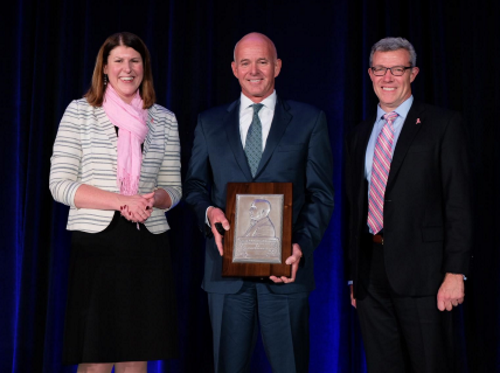During the annual meeting of the American Association of State Highway and Transportation Officials in San Diego, key members called for participation in the organization’s NCHRP 20-24 committee to help map out strategies to address future mobility needs across America.
“This is our moon shot opportunity,” explained Dr. Shawn Wilson (seen above), AASHTO’s 2021-2022 president. “We need to think about how transportation will be different in 10 to 15 years, looking at demographics, prosperity, and many other factors that impact what we do but don’t relate exactly to what we do.”
Funding for the National Cooperative Highway Research Program or NCHRP comes from participating member states of AASHTO, with critical technical support provided by the Federal Highway Administration.

The NCHRP 20-24 committee addresses future concerns of state DOTs and their leadership, explained Julie Lorenz, secretary of the Kansas Department of Transportation and the committee’s chair.
“The reason that is so important is that the future will happen to us,” she said during a presentation at AASHTO’s annual meeting. “But it is a two way street. The actions we take today and tomorrow can influence that future. And we have a better chance of accomplishing big things if we work together both collectively and individually.”
She said that her committee is planning a workshop in either February or March 2022 to begin creating a vision for solving the transportation challenges of tomorrow.
“Infrastructure is intertwined with many other things, especially technology,” Lorenz added. “And if we don’t figure out what the future is, someone else will design it for us.”

Yassmin Gramian, secretary of the Pennsylvania Department of Transportation, said the United States is “on the cusp of a transportation renaissance,” yet one of its biggest challenges will be the ability of transportation leaders to “reprogram” themselves to deal with new and as yet unforeseen problems.
“We should challenge ourselves and be open to thinking differently, expanding our horizons,” she said. “That includes looking at issues such as safety differently, too, with an equity perspective. It means we need to think about how to change the [transportation] culture.”

“Transportation is a tool to help us achieve future visions and this [committee] has the potential to help guide us to making decisions,” emphasized Carlos Braceras, executive director of the Utah Department of Transportation and AASHTO’s 2018-2019 president.
“We do not quite know what the future looks like,” he added. “That’s why this committee will better prepare us to help shape the future of transportation. Because the things we do as state DOTs impacts people at a level that is foundational. We have to get out of our swim lane and this committee will give us tools and guidance to help us do our jobs better.”
 AASHTO Annual Meeting
AASHTO Annual Meeting


